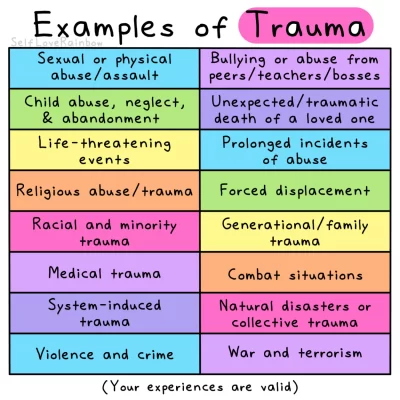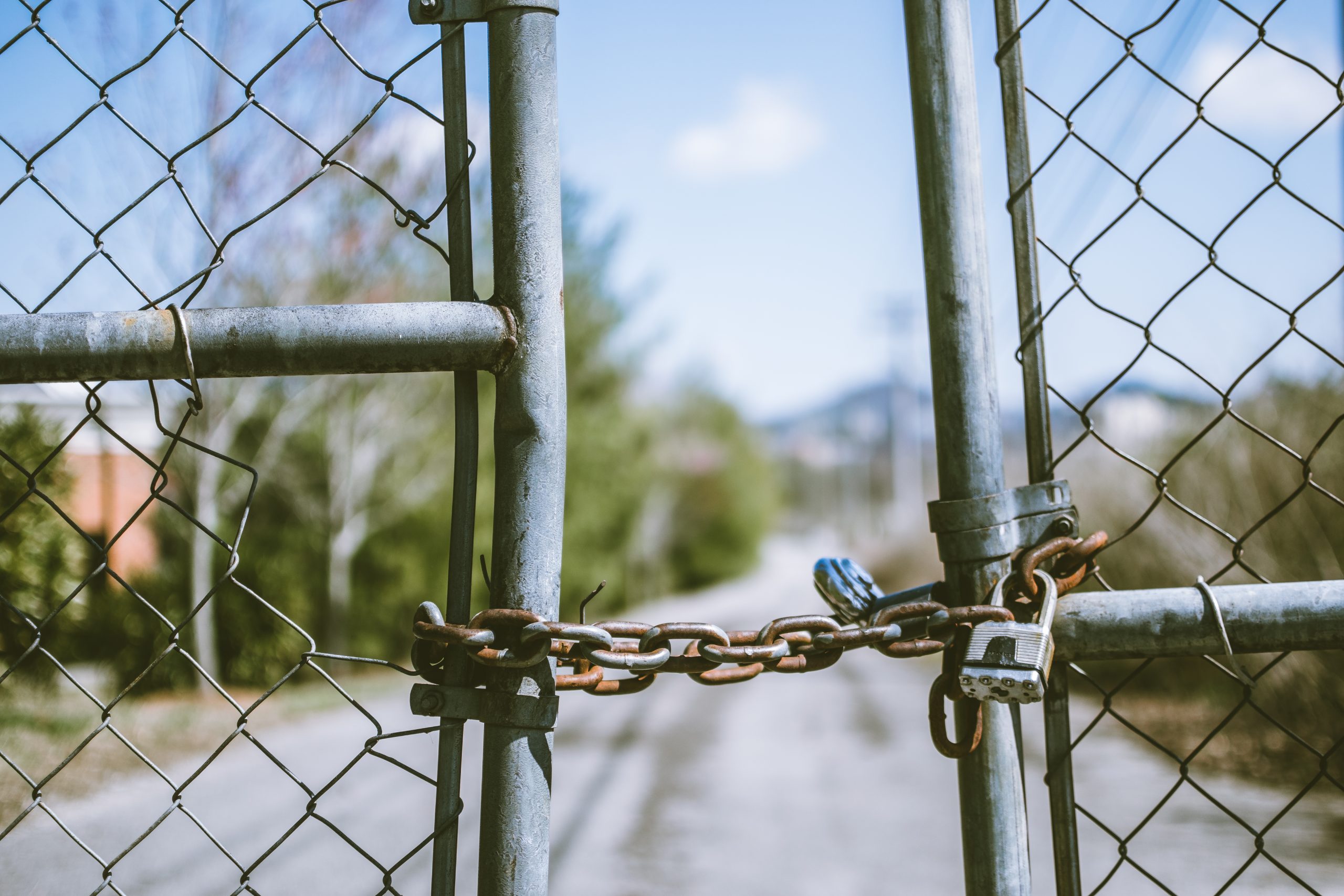Category: Videos
First Responder Trauma and Recovery
The posts you will discover at Sawayer Logistics PLLC (sawayer.com), addressing First Responder and Trauma Recovery will provide resources for the various professions exposed to trauma at different levels.
Trauma is a concept that is fairly new, having evolved in the last 20 years and brought to the fore due to the diagnostic label of Post Traumatic Stress Syndrome (PTSD) of soldiers returning from theaters of war overseas.
As a result, the more general term of trauma has evolved for a more generic application.
According to the American Psychological Association, trauma is an emotional response to a terrible event. Trauma can occur once, or on multiple occasions and an individual can experience more than one type of trauma.

Post Traumatic Stress Syndrome (PTSD), is the mental health disorder that is associated when someone experiences or witnesses a trauma.
Here is the link to the ICD-10
Further, traumas’ impact the relationships of those very same first responders that it originally traumatized.
These first responder groups addressed here will include, but are not limited to: corrections personnel, law enforcement personnel, emergency dispatchers, active military, Veterans, physicians, nurses, EMT personnel, fire fighters, morticians, medical examiners, social workers, counselors, those serving congregations of different faiths, and Hospice staff to mention just a few.
We will explore some situations that create post traumatic stress syndrome, as well as outline the symptoms experienced and the criteria for meeting a formal diagnosis.
Additionally, we will also provide useful resources and links in the process.
We welcome feedback and suggestions for adding additional professional groups that are trauma exposed.
Video Library
Boundaries -Townsend
Getting The Love You Want – Hendricks and Hunt
The Act of Giving and Receiving Love
The Art and Science of Non-dual Love
Loving Kindness Meditation
Illusions, Delusions and the Brain
What Is An Empath – Heffernan
Am I An Empath – Heffernan
Out of Body Experiences?
He Died and Met God- Fr. Rick Wendell
Near Death Experiences with Dr. Jeff O’Driscoll, MD
A Priest on Life After Death Experience-Lampe
Near Death Experiences – Greyson
Are Near Death Experiences Real? – Greyson
The Gift of Near Death – Griggs
Out of Body Experiences-Blanke
Trauma Healing -Langberg
Expressive Writing to Heal Trauma- Pennebaker
60 Characteristics of Complex Trauma -Fletcher
Shame and Complex Trauma with Tim Fletcher
Covid Grief and Trauma by Prof. Suresh Bada Math
What Doctors Should Know About Gender Identity
The Work: A 2 Hour – Katie
Surviving Divorce -Lengacher
Surviving Divorce Grieving
Dating After Divorce
BPD Related Cognitive Distortions
NLP – How To Change Your Life
How To Find Your Passions
Examination of Couples Therapy -Pactin
Teachings of Dr. David Schnarch -Finlaysiny-Fife
Phenomenological Therapy-Van Deurzen
Making Relationships Work- Gottman
Perfectionism and Anxiety -Heffernan
Self Administered EMDR-Heffernan
EMDR Core Beliefs -Heffernan
Safe Place EMDR-Heffernan
Scared of Therapy -Heffernan
Is Diagnosis Destiny? -Sawyer
Links By Category to Other Resources
The links listed below are by listed as categories and include information on the following topics:
Veterans, Mental Health, Policing, Retirement Planning, Traumas, Covid, Anxiety, Dementia, Alzheimers, Step Parenting, Time Management, Human Sexuality, Mental Illness, Pre-marital Counseling, School Violence, Depression, Military and Civilian and Suicide. I have also included writings from my Renditions Blog. We cut the chain on the resource fence for you. So now, “Just click and go!”

Veterans
When Warriors Put On A Badge
https://www.themarshallproject.org/2017/03/30/when-warriors-put-on-the-badge
Headspace and Timing Podcasts on Military Suicide
https://veteranmentalhealth.com/podcast/
A Marine Veterans Story
You’ve already served your country
https://cops.usdoj.gov/pdf/vets-to-cops/Vets2CopsBrochure.pdf
Headspace and Timing – Veteran’s Mental Health Podcast
https://player.fm/series/head-space-and-timing-podcast
Mental Health
Weather Trauma
https://www.scientificamerican.com/article/the-trauma-after-the-storm/
Dealing with Coronavirus Anxiety
Covid 19 and Mental Health
https://sawayer.com/how-covid19-has-changed-the-mental-health-services-model/
10 Apps To Help You Cope With Anxiety
https://blog.therachat.io/anxiety
Coping With Mental Illness
https://medium.com/@jakeshaver/adjusting-to-life-with-a-mental-illness-c9355bd61e4
Mental Health Crisis
https://sawayer.com/wp-admin/post.php?post=2469&action=edit
Dementia
https://www.nia.nih.gov/health/what-dementia-symptoms-types-and-diagnosis
Alzheimer’s
https://www.alz.org/alzheimers-dementia/what-is-alzheimers
Emotional Betrayal
https://greatergood.berkeley.edu/search?q=emotional+betrayal
https://sawayer.com/the-lessons-
Death and the Human Need for A Savior
of-death-and-the-human-need-of-a-savior/
NAMI Texas – Mental Health Resources Information
https://photos.app.goo.gl/BtMoAxAErtc69NFU7
Step Parenting
What is Depression: American Psychiatric Association
https://www.psychiatry.org/patients-families/depression/what-is-depression
National Suicide Prevention Website and Hotline
https://suicidepreventionlifeline.org/
Headspace and Timing Podcasts on Military Suicide
https://veteranmentalhealth.com/podcast/
The Texas Suicide Prevention “Just Ask” Project
https://texassuicideprevention.org/training/video-training-lessons-guides/ask-about-suicide-ask/
We Have Too Much Evil Before Us
https://sawayer.com/we-have-too-much-evil/
8 Things You Should Do When Your Divorce Is Final
Pre-Commitment Relational Skills
TwogetherinTexas: Pre-Marital Coaching
https://twogetherintexas.com/Pdf/WhatIsHealthyMarriage.pdf
Mayo Clinic Education: Pre-Marital Counseling
https://www.mayoclinic.org/tests-procedures/premarital-counseling/about/pac-20394892
Time Management Practice and Retirement
Why Worry About Time and Its’ Management
https://sawayer.com/time-management/
Time Management Defined by Wikipedia
https://en.wikipedia.org/wiki/Time_management
Retirement Questions and Answers
https://sawayer.com/retirement-questions-and-answers/
10 Questions To Ask About Retirement
Time and The Strategic Planning Manifesto
https://www.strategyskills.com/pdf/The-Strategic-Thinking-Manifesto.pdf
Strategic Thinking Template
https://www.google.com/imgres?imgurl=https%3A%2F%2Fd2slcw3kip6qmk.cloudfront.net%2Fmarketing%2Fblog%2F2017Q4%2Fstrategic-planning%2FStrategic-Planning-Process.png&tbnid=Y6TFjcXeZiEE1M&vet=12ahUKEwiyzKSY-OT_AhU0kokEHTW4BbkQMygSegUIARCIAg..i&imgrefurl=https%3A%2F%2Fwww.lucidchart.com%2Fblog%2F5-steps-of-the-strategic-planning-process&docid=_0ml0szmFROCbM&w=960&h=1312&q=Strategic%20planning&hl=en&ved=2ahUKEwiyzKSY-OT_AhU0kokEHTW4BbkQMygSegUIARCIAg
Policing
When Warriors Put On A Badge
https://www.themarshallproject.org/2017/03/30/when-warriors-put-on-the-badge
Profiling School Shooters
Are Police Obsolete?
Damage control and Media representation and responses to police
https://ro.uow.edu.au/cgi/viewcontent.cgi?article=1162&context=ltc
Leading Police Culture Change
https://www.policefoundatiMmon.org/leading-culture-change/
What would it take to really change the police culture?
https://www.startribune.com/what-would-it-take-to-really-change-the-police-culture/436387213/
The Un-written Code of Silence
Peelian principles of Law Enforcement
https://en.wikipedia.org/wiki/Peelian_principles
Community policing
https://en.wikipedia.org/wiki/ComPmunity_policing
Problem-oriented policing
https://en.wikipedia.org/wiki/Problem-oriented_policing
LGBTQ and Sexuality
What Doctors Should Know About Gender Identity
Trans Man
https://en.m.wikipedia.org/wiki/Trans_man
Transgender Anti-Discrimination Reversal
https://heinonline.org/HOL/LandingPage?handle=hein.journals/djglp25&div=13&id=&pag
Male Survivors Of Sexual Abuse
https://sawayer.com/male-sex-abuse-survivors
Sexual Desire and Better Relationships
Law Enforcement At A Crossroads of Change
Law Enforcement At A Crossroads of Change
Writing about culture change in policing within today’s challenging environment is no easy task. Due to the implications of culture change within policing agencies in today’s confrontational environment, I have tried to keep focused on what I believe are the prominent internal cultural challenges that law enforcement agencies across the country face today.
While I will specifically address the issue of police culture, we must always remember, that the larger societal culture, which itself, is composed of other “sub-cultures” also factor into the how police culture is formed and operates today. Any attempts to modify police culture MUST also acknowledge the values and beliefs that dominate the general culture. It is that general culture where legislatures on both the state and federal level “operationalize” the values of their communities.
An example of this would be the larger societies values and beliefs regarding justice, race, poverty, crime, and so on. These are the base values that go into laws and laws are a base value in culture and more specifically in police cultures.
So first I have to say that I am offering this perspective only from my personal experiences, without offering references to hard research. I am a long-time law enforcement, corrections and mental health professional, with a career that began in the 1980’s. I also a Master Peace Officer, Mental Health Peace Officer, Licensed Professional Counselor and Certified Train the Trainer for the Blue Courage Program and I believe strongly in Community Policing and Restorative Justice. But perhaps my biggest credential is my heart for the profession of law enforcement.
That said, I certainly welcome any dialogue on this issue here at Sawayer Logistics at sawayer.com. So here is my pitch.
Most change within institutionalized settings is unfortunately reactive, as opposed to proactive. This is especially true when in comes to organizational change. The recent violence in America, has once again forced police agencies to reflect on how much or little they should change. Police agencies, by their structure are resistant and slow to change. Some reasons for this are because they are conservative and are accountable to political bodies within the communities they serve. We often hear the adage, “If it ain’t broke, don’t fix it!”. But what exactly is broke and where is broke found?
The George Floyd death would certainly indicate that the four police officers involved were broken in terms of both their actions and inaction that lead to Floyd’s murder. We need to ask ourselves if cops can be murderers and that is very distasteful question to even ask. On its’ face, such thoughts seem to fly in the face of what we as professional peace keepers are mandated to do….Serve and Protect.
Since the Floyd issue is far from an isolated event, it may be time to look for answers about who we serve, how we serve, and why we serve. While minorities are over-represented in such tragic encounters with law enforcement, we tend to focus on race relations when addressing the question of what to do. I would suggest that we all, somewhere in our guts, understand that no new or improved trainings, policies, and procedures will have any lasting effect unless we change our current policing culture and the values within that culture.
Cultures are funny animals. They are often created slowly, over decades. They often take decades to change because by their very nature, they are conservative entities. Changing police culture is substantially more challenging than implementing new policies, procedures and trainings. While there are studies on police cultures, there are not many that specifically provide a “how to” paradigm. All of the literature points to the high level of resistance to police culture change from both within the ranks and from police administrators. It’s a tough mountain to climb.
The recent events in our cities and the degree of national and world attention to those events are pushing us up that mountain. If we are to reach the top, we must see the value of making the climb, even after the voices for change become quiet. We must change police culture because we are professionals bearing some of the strongest and most respected job responsibilities in society. So was there an identifiable starting point that contributed to today’s police culture? Let me suggest that was such a point. I will also suggest that we have some available tools to help get to a new beginning.
Since Americas trauma and the resulting transformation, law enforcement has been exposed to a new wrinkle within its’ culture. “Para-Militarization” has invaded the cop culture with a vengeance. The war and the warrior mentality, along with almost free military equipment, from helicopters to transports and Humvees, are standard fare in most agencies today.
At the time of 9-11, nothing seemed to out of bounds in our flight to protect the homeland from foreign terrorists. The intent was to never again be the unaware victim. Americans faced new security procedures at their airports and at their banks.
The less obvious change in procedures was occurring in law enforcement agencies, which historically had some type of command and control infrastructure. As a result, the transition to a more militarized culture was somewhat familiar territory. The availability of the military equipment merely solidified that cultural transition.
I remember training’s that I attended, where we were told that we were the “Sheepdogs”, protecting the vulnerable “Sheep” from the terrorist predators. Ironically, the trainings focus was on school violence. This new mantra ultimately was reflected in the idea that we were now the new para-military heroes, deployed to Americas streets in our surplus military equipment and attire, to kick some serious ass.
Somewhere and somehow this new mindset morphed into a permanent part of the police culture in such a way that it became the antithesis of community policing. With foreign enemies largely destroyed on American and foreign soil, the new cop culture with all of its surplus military equipment, seemed like a dog without any cats.
The implementation and deployment of special units know as SWAT teams began to play a central part in departments across the land. In the process, the officers participating in those units began to gain a great deal of cultural influence and the mindset within policing went from “we are part of the community”, to the “community are dumb sheep and we are superior sheepdogs”, to “them vs. us”.

Now to be clear, historically, law enforcement had its’ “suspects” some of which included those who were clearly “not us”. Foreigners, minorities, the poor, the mentally ill, and the law violators living in our communities. There was a growing institutionalized prejudice within the policing culture, that, until the last 20 years, wasn’t even discussed in training academies. There were no Humvees or tactical units in most departments back then.
With the 9-11 terrorists extinguished, the old familiar, “not us” groups became the new “bad guys” or to put in another way, the “them”. Agency leadership in departments could not resist the offer of getting surplus military equipment to supplement their fleets. Most departments had few dollars to spare for such costly equipment. It would take little effort to move toward creating SWAT tactical teams to utilize the new armada.
No one objected, not the city councils, not the county commissioners, not the state governors, not the congress, and not even members of the local communities. Without open discussion regarding why and how this para-militarization was happening, the parameters of its’ implementation and its’ goals, the cultural change went underground and out of sight.
The new police culture was now one that had the capacity for aggression and tactical interventions. Community policing, where officers were in personal contact with the man on the street for most departments stopped. Contacts with the public became formal and impersonal. It was now, “them vs. us”.
The cop, sitting in the standard issue patrol car holding the para-military, aggressive mindset doesn’t need a Humvee to feel his power over others anymore. The “Sheepdog” has now lost it’s protective instinct toward the sheep. There are good sheep and bad sheep…white sheep and black sheep.
Body cameras, which became possible and practical to issue because of technology, were supposed to protect cops and community members alike. Instead they were often resented by line officers as just another piece of “squealer” technology that carried yet another set of policies and procedures that had to be followed. In actuality, these cameras often have served a preventative function when seen as an officer protection.
So what does all of this imply for changing police interactions with the communities they serve?
I contend that the violence on American streets will not be solved by just better training alone because the training will not overtake the current police culture. Instead, there has to be more open contact and communication at the “street officer” level with the common and every day community members they serve.
There needs to be not just more tactical trainings but also a focus on officer mental and spiritual well being. It’s the only way to stop the “them vs. us” mentality that justified para-military interventions. Yes, we can have working groups and task forces, but the real change is at the street level by empowered cops who have the right mindset and the right heart for the profession and are rewarded for that as opposed to being shamed for it!
The most effective equipment has to be controlled by the heart first and the mind second, which then controls the body. For those of us who are authorized under very limited conditions, to take a life, the heart must be right.
Policies and procedures and trainings don’t change the heart. Open conversations and regular contact with the communities we serve as “street level cops” however does help tremendously.
It’s that contact that can either foster paranoia and hate or goodwill, especially when it involves being in touch with the “them”.
It will take time. Maybe we need to just go ahead and start painting those Humvees in pastels colors now!!
The Blue Courage training program for law enforcement officers and the perspective that it offers on community justice and community policing, should be a critical component of most law enforcement training. It and similar programs are what is needed now, more than new rules or new procedures or new training, you must change the heart in order to have positive community contact, which takes…well…Blue Courage!
The BlueCourage.com webpage is full of great articles and other offerings for LEOs (Law Enforcement Officers).




